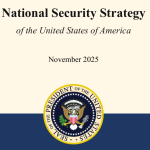Beijing, China – In the expansive chessboard of global geopolitics, China is deftly maneuvering its knights and bishops through a surge of military diplomacy under the watchful eye of President Xi Jinping. Recent military exercises with Mongolia and Cambodia are the latest moves in Beijing’s grand strategy to counter the United States’ entrenched presence in Asia. These drills are not mere displays of power but a calculated effort to build a network of military partnerships, positioning China as a formidable counterbalance to U.S. alliances in the region.
The small yet significant Southeast Asian nation of Cambodia has become a focal point of China’s comprehensive strategy. Beyond the scope of joint military drills, Beijing has poured investments into Cambodia’s infrastructure, funding airports, roads, and a plethora of private ventures such as hotels and casinos. With over 40% of Cambodia’s $10 billion foreign debt owed to China, Beijing’s economic leverage is profound. This economic foothold, coupled with a growing military presence, underscores China’s intent to embed itself deeply within Cambodia’s political and security framework.
China’s joint exercises with Mongolia and Cambodia in recent weeks have sparked concern among regional observers and Western analysts alike, highlighting Beijing’s expanding strategic ambitions. Known for setting a record number of joint military exercises in Southeast Asia last year, China has shown a penchant for military engagement regardless of a partner country’s size or power. These drills, experts argue, are far more than routine training—they are instrumental in expanding China’s influence on the global stage.
China’s official narrative positions these military exercises as efforts to promote regional stability and enhance bilateral ties. The state-run Global Times has defended the drills with Mongolia as a necessary response to perceived U.S. provocations, citing the Washington Declaration and trilateral exercises involving the U.S., Japan, and South Korea. Beijing frames its actions as defensive, claiming they aim to safeguard regional security against a U.S.-driven “Cold War mindset.”
The pattern of China’s military engagement is neither recent nor isolated. Since its first bilateral military exercise with Kyrgyzstan in 2002, China has steadily increased both the frequency and complexity of its joint drills. From 2013 to 2018, China conducted an average of 44 military exercises annually, a more than seven-fold increase from the previous decade. These activities have ranged from bilateral air force exercises with Pakistan to multilateral naval and counterterrorism drills with Russia, showcasing China’s expanding military reach.
Naval diplomacy is a critical aspect of China’s strategy. Foreign port visits allow Chinese naval vessels to conduct maintenance, engage in diplomatic exchanges, and participate in humanitarian operations. Such activities not only demonstrate China’s naval capabilities but also strengthen its diplomatic ties with host nations. By deepening military connections and leveraging economic influence, China aims to assert its dominance in Asia and beyond.
As China continues to modernize its armed forces and expand its global presence, the international order faces a new and complex challenge. Understanding the strategic intentions behind China’s joint military drills is crucial for navigating the intricate geopolitics of the 21st century. In this evolving landscape, Beijing’s moves are clear: a blend of economic leverage and military diplomacy designed to secure its position as a global power. (Agencies)










